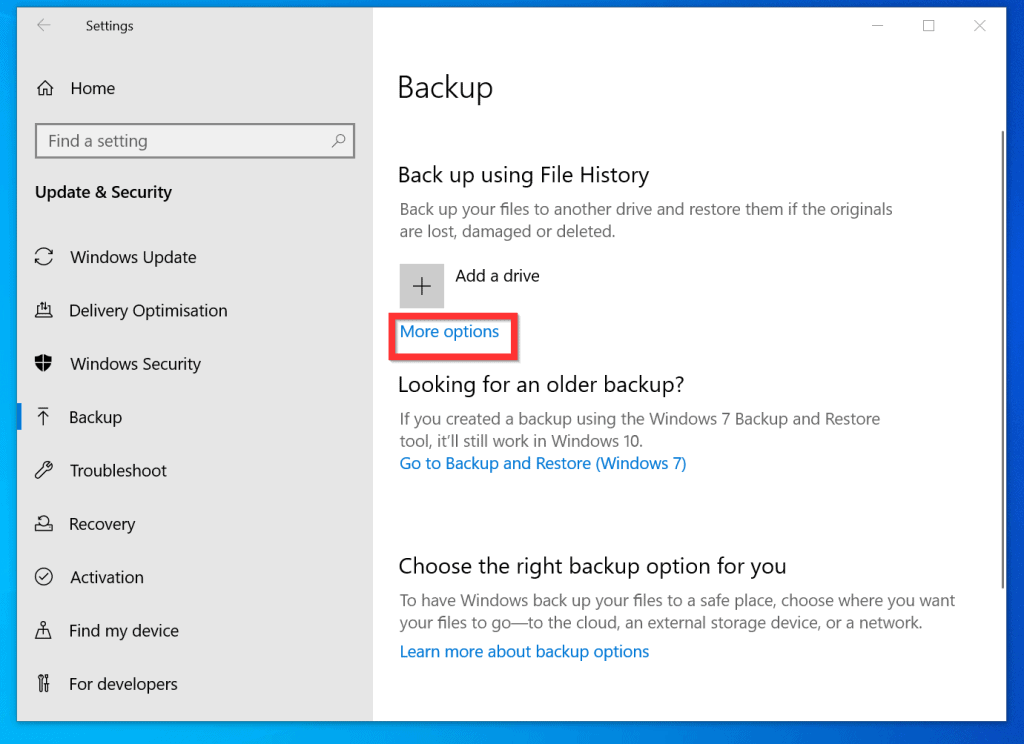

Place your mouse cursor over a section of blank space within the USB thumb drive window and right-click again. In the search box on the taskbar, type: Control Panel Using your mouse cursor, select the file (or files) you would like to copy, then right-click on the selection. If you used Backup and Restore to back up files or create a computer image backup in previous versions of Windows, your old backup is still available in Windows 10. It only backs up files from specific folders such as Documents, Music, Pictures. To save it in a different place, right-click Restore, select Restore to, and then choose a new location.įind your backups created on previous versions of Windows. File History automatically saves specific file folders on a backup device. In the PowerShell window that appears, type fhmanagew.exe -cleanup 0 to remove all but the most recent file backups, then hit enter to run the command. When you find the version that you want, select Restore to save it in its original location. If you want to immediately remove any saved backup files kept by File History, you’ll need to right-click the Windows Start menu and press the Windows PowerShell (Admin) option.Look for the file that you need, then use the arrows to see all its versions.

Connect an external USB drive with enough FREE space.
#Backup files windows 10 how to
Restore your files with File History. How to Backup Files If Windows Wont Start by using a Linux Live CD or USB. If you cant remember the store location of your backup file, search FileHistory in File Explorer to see if you can find the backup files.
#Backup files windows 10 update
Select Start > Settings > Update & Security > Backup > Add a Drive, and then choose an external drive or network location for your backups (Figure 1). How to set up and enable File History Go to Start > Settings > Update & Security.
#Backup files windows 10 windows 10
Then select Restore your files with File History. You can use the File History feature in Windows 10 to back up to an external drive or network location. Click the button for 'Add a drive,' and select the drive. Connect the drive or device that you want to use as the backup location. In the search box on the taskbar, type: Restore Files In Windows 10, go to Settings > Update & Security > Backup.On the left side select Backup Now in main window click the hyperlinked: Go to Backup and Restore (Windows 7) In the Backup and Restore (Windows 7) dialog that opens click the hyperlinked: Set up backup. In the Windows Settings dialog select Update & Security. If you are missing an important file or folder that you have backed up, here is how to get it back: Right-click on Start and select Settings. Select Start > Settings > Update & Security > Backup > Add a Drive, and then choose an external drive or network location for your backups ( Figure 1). You can use the File History feature in Windows 10 to back up to an external drive or network location.


 0 kommentar(er)
0 kommentar(er)
